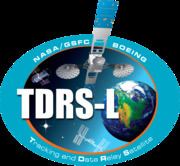Mission type Communications COSPAR ID 2014-004A Mission duration 15 years (planned) Inclination 6.77° Period 24 hours Rocket Atlas V | Operator NASA SATCAT no. 39504 Manufacturer Boeing Inclination 6.77° Launch date 24 January 2014 Bus Boeing 601 | |
 | ||
Similar TDRS‑11, Kosmos 2501, DirecTV‑14, UniSat‑6, BugSat 1 | ||
TDRS-L, to be renamed TDRS-12 upon entry into service, is an American communications satellite operated by NASA as part of the Tracking and Data Relay Satellite System. The twelfth Tracking and Data Relay Satellite, it is the second third-generation spacecraft to be launched, following TDRS-11 in 2013.
Contents
Spacecraft
TDRS-L was constructed by Boeing, based on the BSS-601HP satellite bus. Fully fueled, it has a mass of 3,454 kg (7,615 lb), with a design life of 15 years. It carries two steerable antennae capable of providing S, Ku and Ka band communications for other spacecraft, with an additional array of S-band transponders for lower-rate communications with five further satellites. The satellite is powered by two solar arrays, which produce 2.8 to 3.2 kilowatts of power, while an R-4D-11-300 engine is present to provide propulsion.
Launch
The United Launch Alliance was contracted to launch TDRS-L. The spacecraft was launched on January 24, 2014 at 02:33 UTC (21:33 local time on January 23). An Atlas V rocket was used, flying in the 401 configuration, with tail number AV-042.After launch, TDRS-L was deployed into a high-perigee geosynchronous transfer orbit. The spacecraft raised itself into a geosynchronous orbit using its onboard propulsion system.
